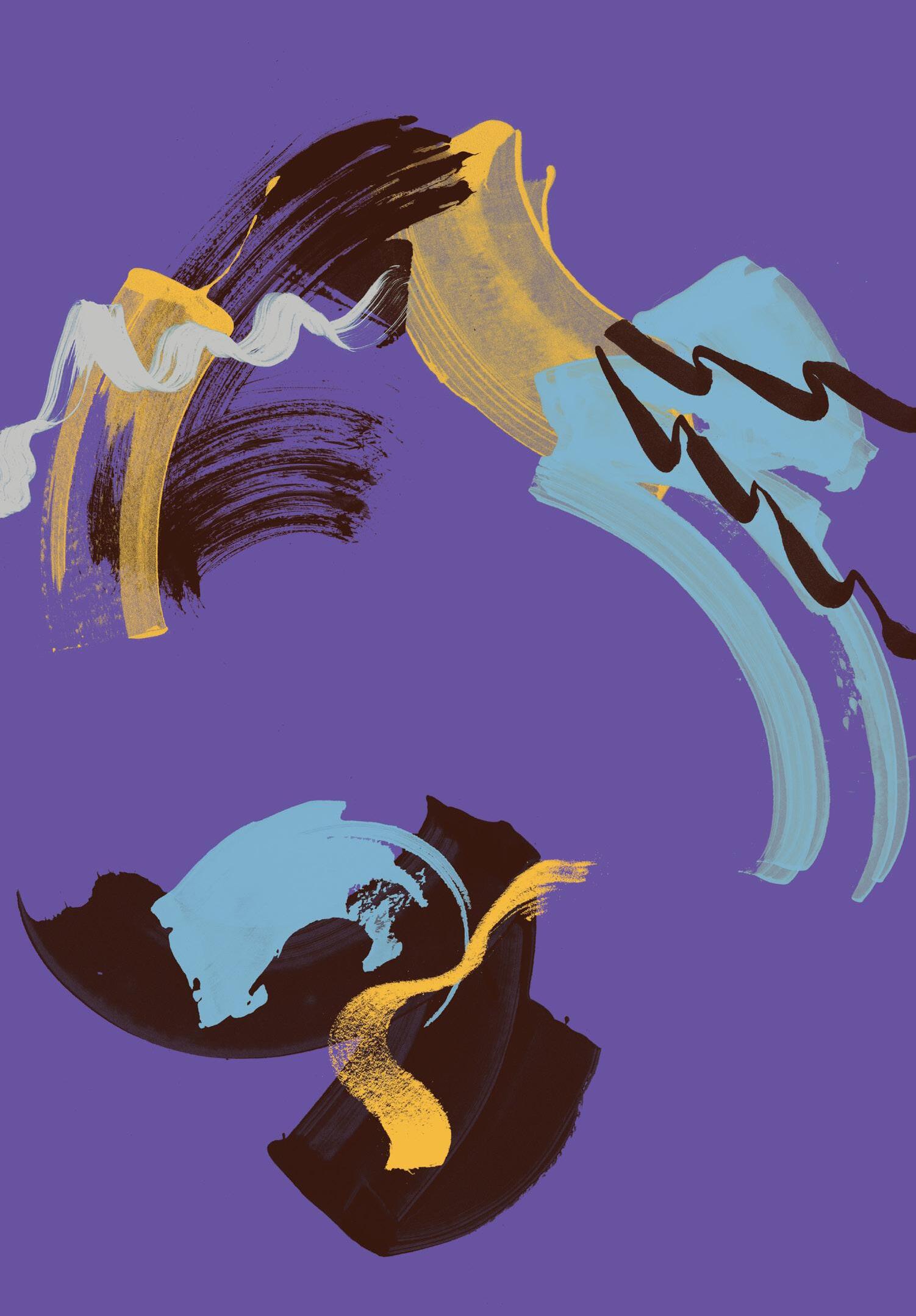

SEASON 2025 TUNING IN
SEASON 2025 TUNING IN
Words by Paavali Jumppanen
A recent guest visitor to ANAM said “today we need to realise that music is more than just entertainment”, and how right she was! For in all the music we learn, play, and listen to we are dealing with, and tuning in to, much more.
In 2025 ANAM will be tuning in to the Australian avant-garde, to the miracles of Mozart’s intuition, to Beethoven’s ethos, and to what’s new in the minds of young Estonian composers. We will be tuning in to French music, along with the past and present colleagues of Ravel, who will be celebrated at the end-of-the-year chamber music festival. We will be tuning in to our immediate surroundings with a program led by Anna Goldsworthy which invites us to reflect on the history of the Abbotsford Convent. Writer Nam Le, a former tenant at the Convent, will provide a tangent to this program with a poem commissioned by ANAM.
Throughout the year, our musicians will perform alongside acclaimed visiting artists, such as percussionist Steven Schick, clarinettist Michael Collins, and Brooklyn Rider. Together we will be tuning in to the whispers from the world about what music, the artform we are custodians of, should be dealing with right now.
Another departure from the more familiar, ANAM pianists will be playing a fortepiano (the bohemian predecessor of the modern grand) in various programs, thus allowing them to tune in to authenticity of composers such as Maria Szymanowska, Jan Ladislav Dussek, and Claude Joseph Rouget de Lisle, who is famous as the composer of the Marsellaise.
We all know that not only are ANAM’s faculty expert pedagogues, many of them are also internationally acclaimed performers. In concerts which they will be leading, we’ll encounter the peculiarities, traditions, and the depth of various instruments’ repertories.
The methods of study “slow-learning” and “listening“ we’ve worked on recently with ELISION Ensemble and the Australian String Quartet will see new and cultivated iterations through reappearances of both celebrated ensembles in 2025. And in April, when we embark on celebrating the glorious complexity and 100th birthday of French composer Pierre Boulez, who to music, is akin to the likes of Jackson Pollock or Wassily Kandinsky in the visual arts.
In 2024 ANAM gathered to discuss what global warming means for the arts, and we also invited Australian Indigenous artists as well as musicians building bridges to altogether different musical traditions to share their stories and musical ideas with us. These discussions and threads of listening and tuning in, will see further growth within the 2025 ANAM training program.
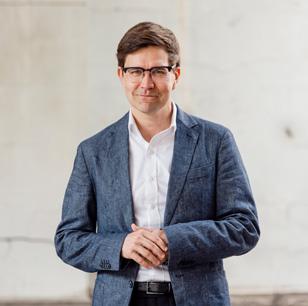
Schubert may have been scribbling his tones on a napkin in a café, as per a delightful poem by Mary Oliver, while composer Anna Clyne is probably typing hers in front of a computer. But all the same, the sonic dreams of these creative beacons contain wondrous worlds. The tracks into those worlds are coated in mystery, but of the kind that doesn’t need revealing, only study. That study – the daily industry of ANAM – is our entry-pass onto those tracks. Join us in this pursuit to tune in to the sounds of meaning and beauty, and to the springs of humanity.
The position of ANAM Artistic Director is generously supported by Janet Holmes à Court AC, and John and Rosemary Macleod
TUNE IN
Get a taste of what ANAM has on offer in 2025 with this specially curated playlist

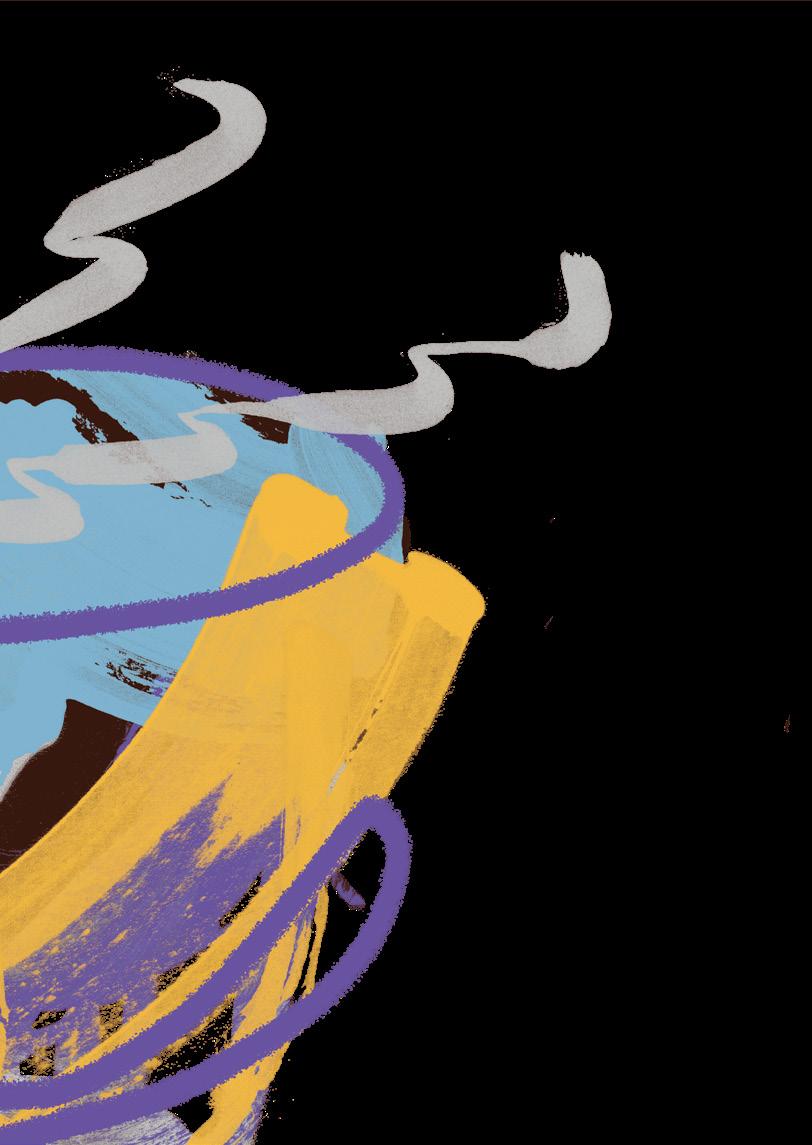

ANAM ORCHESTRA GALA CONCERT WITH ASHER FISCH
Words by Alex Owens
Whilst in Perth for ANAM’s 2024 orchestral immersion with the West Australia Symphony Orchestra (WASO), we caught up with their Principal Conductor and Artistic Adviser Asher Fisch to chat about his ANAM residency in 2025. You could scarcely tell he was minutes away from conducting Mahler’s Symphony of a Thousand.
After conducting three Side-by-Side projects with ANAM musicians, 2025 will see you conduct the ANAM Orchestra for the first time. What are you looking forward to in working closer with ANAM musicians?
I have been very excited to have ANAM musicians participate in WASO’s big projects. During the tight timelines of our side-by-side projects, where I cannot change the way I work, I trust that WASO’s musicians will bring them on board as we do these big pieces that mean so much. So of course, the opportunity to work with ANAM musicians directly without the translation of my musicians in WASO is something that I’m excited about.
Tell us a bit more about why you’ve chosen Brahms for the ANAM Orchestra
To me, Brahms is foundational. At the very beginning of my tenure as Principal Conductor and Artistic Advisor in Perth, I used Brahms just to get this warm, string based, Central European sound. This repertoire is very important to professional musicians and orchestras. Even if we’re playing Tchaikovsky or Dvořák, until you get to Stravinsky and Shostakovich, everything we play is in this world of sound you find in Brahms.
You’ve held positions at some of the biggest opera houses in the world and have won over Australian audiences with your Ring Cycle. Can you tell us about your career path from opera to symphonic repertoire and the influence opera has had?
I came to orchestral conducting from opera, which is an old-fashioned route, and one that a lot of the great conductors of the twentieth century took. Karajan and Solti, they all started in the pit, and I think that’s where you really learn the métier of conducting. Unlike a symphonic concert, you can’t stop conducting and expect things will take care of themselves. Though I always did symphonic music, it was a graduation from opera to the concert hall, whereas a lot of the younger generation start as instrumentalists and come from the symphonic world. I see that I bring a lot of my experience in technique and of holding complicated things together. Mahler 8 doesn’t look like the end of the world after you’ve done a Ring Cycle. And in the concert hall, everyone is standing still and not moving around! And (I mean this with a bit of humour) the drama from the opera comes into my conducting, and I would say I see works in a more dramatic way. I maybe take more liberties than normal!
This program features a flute concerto by friend of ANAM and 2024 ANAM Set composer Lachlan Skipworth, which you premiered in June 2024. What was it like bringing this work to life, and what role do you see conductors having in championing new Australian works and giving them life beyond their premieres?
It’s essential that we participate in promoting young and established Australian composers, especially in Australia, because without our support they have so few chances to get their works performed. I think we should choose a few composers that we like and not only perform one piece but make sure we go back and perform their works. That’s how it was done in the past for the great composers: they always had conductors who championed their works and conducted them at every opportunity. The biggest challenge for modern composers is getting their works done more than once. I’m so happy to have another opportunity to play Lachlan’s music with ANAM. Lachlan is a fantastic composer, and in this case it’s even more of a happy occasion because the concerto is written for one of WASO’s finest musicians, Andrew Nicholson. He’s a phenomenal flautist and I can’t imagine any other flautist playing the piece because it’s written for his abilities, technique, musicianship and musicality. Hopefully ANAM’s flautists will pick it up, learn it and play it too.
You’re conducting Anna Clyne’s This Midnight Hour with ANAM and SSO in 2025 – Anna may be a new name for many in these audiences. Can you tell us a bit more about Anna?
She’s quite new to me too – I was offered this work by Evan Kennea [Executive Manager of Artistic Planning at WASO], and by reading a few of her interviews, she’s a fascinating woman because she has such a non-traditional way of talking about music. Anna is a fantastic composer. We enjoyed doing This Midnight Hour at WASO so much that I immediately offered it to Sydney Symphony and ANAM, and you both loved the idea.
Is there a remarkable moment you would like to share, among what must be hundreds of stories from studying with Daniel Barenboim to now leading WASO?
In 1991, Daniel Barenboim was going to conduct Mahler’s Das Lied von der Erde with soprano Barbara Hendricks and tenor Siegfried Jerusalem. Because it was just before the first Iraq War, Siegfried got cold feet. They brought in Louis Gentile and needed a pianist to play for a rehearsal with Daniel. I was at the opera, and was a young pianist who would play anything and could sight-read, so I went and did the rehearsal. Daniel liked it and we chatted, and he invited me to see rehearsals with the orchestra. A few days later I get a call from the Philharmonic – Daniel was sick and he said I was the only person who can take over. They said, ‘Asher cannot do it, he doesn’t know Das Lied von der Erde,’ they wanted me to do New World Symphony. I said: ‘No way,

the orchestra doesn’t know it, it’s either the Mahler or nothing.’ Just by pure luck, because Daniel was also going to play the concerto, Rado Lupo happened to be in town and free, so he jumped in and played Mozart’s A Major piano concerto and I conducted. Through this I got the associate conductor job with Daniel at the Berlin State Opera. This was a real moment in my life that changed everything and opened all the doors, and Daniel was such a great, generous mentor.
And finally, why do you think it’s important we keep the orchestra alive and vibrant for future generations? Orchestras the whole world over are fighting for survival. I see it in Europe and America, and I keep saying that I don’t think we have a reason to survive if we just keep recycling the old way of performing concerts. I think opera is in a better place because it always renews itself by presenting new productions of the old material. You always see a new take on The Barber of Seville or the Ring Cycle, but we keep doing the same Brahms symphony – so what? [I want to do is] to redefine the concert as a form of displaying art. We’ve also become very detached from our audiences. That’s why I have a series of Discover concerts at WASO, where I talk to audiences about the music, I demonstrate things, I even let them use cell phones, and screen information about the music while we’re playing it. There’s no reason to keep the art form if we’re so detached from the audience. We have to find a way of bringing young people back to the halls, and it’s difficult, but communication and talking to audiences is important, so they know what they’re facing when they come to a concert. We have to find solutions.
ANAM ORCHESTRA GALA CONCERT WITH ASHER FISCH Friday 21 March 7pm
Anna CLYNE This Midnight Hour (2015)
Lachlan SKIPWORTH Flute Concerto (2024, Victorian Premiere)
Johannes BRAHMS Symphony No. 2 in D Minor, op. 72 (1877)
Asher Fisch conductor
Andrew Nicholson flute ANAM Orchestra
Venue Elisabeth Murdoch Hall, Melbourne Recital Centre
Bookings anam.com.au or 03 9645 7911
melbournerecital.com.au or 03 9699 3333
Asher Fisch’s Artistic Residency at ANAM is generously supported by David and Gai Taylor
This performance will be available as a delayed broadcast on ABC Classic
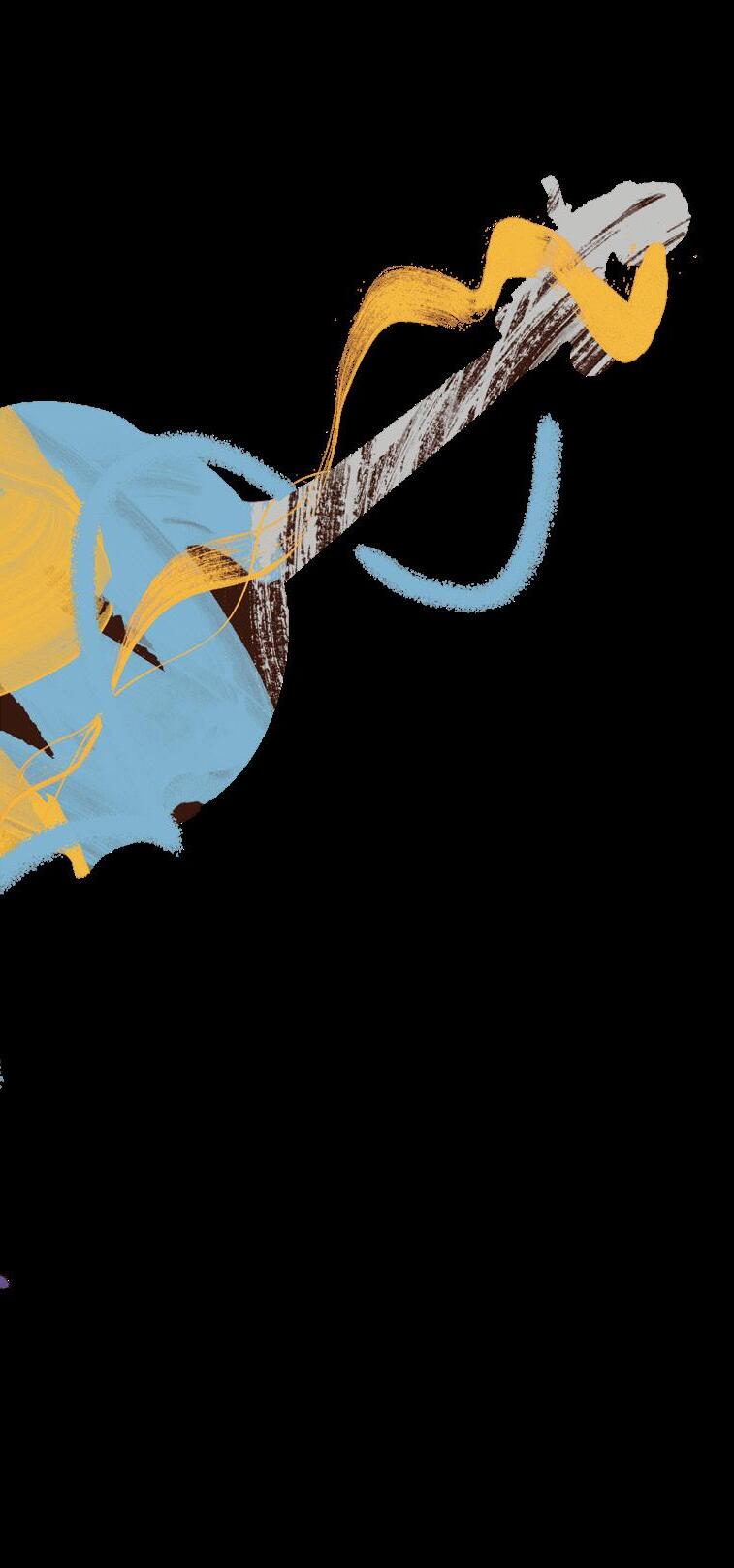
RESONATING THROUGH TIME

Words by Evan Lawson
Australia is known to have a great community of Baroque musicians. We are lucky enough to have a vibrant and rich community of musicians who have specialised in this diverse and brilliant genre, and we’re delighted to welcome a team of superstar musicians from this community – Sara Macliver and Genesis Baroque – to ANAM for a special residency in 2025.
Sara Macliver is no stranger to Australian audiences. With a career spanning over three decades, she has earned a reputation as one of the nation’s most beloved and versatile sopranos. Her mastery of Baroque music, in particular, has garnered her widespread acclaim, establishing her as one of the leading exponents of this genre. Whether performing with the Australian Chamber Orchestra, the Australian Brandenburg Orchestra, or on international stages, Macliver’s interpretations are always marked by their depth, clarity, and emotional resonance.
Over the years, Macliver’s collaborations have taken her to some of the most prestigious festivals and concert halls across the country. Her performances have been a highlight at the Perth, Melbourne, and Sydney Festivals, and she is a regular fixture with all the major Australian symphony orchestras. Her recordings for ABC Classic, which include over 35 CDs, have earned her numerous awards and a devoted following.
In this ANAM residency, Macliver joins forces with Genesis Baroque, a company known for its vibrant and historically informed performances of Baroque music. Under the direction of artistic leaders who are themselves seasoned performers, Genesis Baroque – which includes many ANAM alum – has built a reputation for breathing new life into the Baroque repertoire. Their performances are characterised by their attention to period detail, dynamic interpretations, and a fresh, innovative approach to music-making.
For this project, musicians will have the opportunity to take a deep dive into the world of period instrument playing – a world that is of course deeply influential on our current way of playing instruments, but is not at the core of contemporary instrumental performance practice. This residency will allow string musicians to experience the difference of sound in gut strings and historical bows; brass players will encounter the world of natural horns and trumpets, instruments that shine with a brilliance very different to their contemporary cousins, but that require a very different approach in playing technique; and the wind, keyboard and percussion musicians will encounter the varying early-music orchestral methods needed to make their instruments sing.
“ANAM’s extraordinary young musicians display such verve and curiosity, and I’m truly excited to be bringing Genesis Baroque’s specialists to ANAM to delve into the incredibly colourful, raw, and expressive sound world of period instrument performance.”
– Jennifer Kirsner, Artistic Director of Genesis Baroque.
Singing forms the core of a lot of the repertoire from this period, and so the opportunity for ANAM musicians to experience the mastery of someone like Sara adds to the depth of knowledge imparted in this exchange.
“I have no doubt this collaboration will be an exciting and memorable journey as we take a deep dive into the deeply expressive and dramatic world of 18th century Viennese music.”
– Sara Macliver
There is no doubt that this celebration of the music of the distant past will be a joyful and insightful experience at ANAM in 2025.
GENESIS BAROQUE WITH SARA MACLIVER
Saturday 10 May 7pm
Venue Rosina Auditorium, Abbotsford Convent
SARA MACLIVER WITH ANAM PIANOS
Wednesday 14 May 3pm
Venue Good Shepherd Chapel, Abbotsford
ANAM AT THE CONVENT
From early music to the latest sounds of today, the ANAM at the Convent series showcases a wide variety of music to explore and enjoy, performed by a range of incredible local and international guest artists alongside the musicians of ANAM.
Bookings anam.com.au or 03 9645 7911
Sara Macliver’s Artistic Residency at ANAM is generously supported by Meredith Baldwin

Carl Ditters von
Wolfgang Amadeus MOZART
Josef HAYDN Symphony No. 6 in D Major, Le Matin
Marianna MARTINES Cantata Berenice, ah che fai?
Serenade No. 9 in D Major, K. 320 Posthorn
DITTERSDORF Symphony No. 1 in C Major, Die vier Weltalter (The Four Ages of the World)
Ludwig van BEETHOVEN Piano Trio in B-flat Major, op. 11
Franz SCHUBERT Allegro in A Minor, D. 947 Lebensstürme for piano four hands
Johannes BRAHMS Symphony No. 2 in D Minor, op. 72
ANAM at the Convent with Genesis Baroque and Sara Macliver
BOULEZ RULES!
When I think back on my early encounters with 20th-century music, Pierre Boulez’s name is one that stands out, woven into the fabric of my musical upbringing. As a child, devouring every CD of 20th century music I could., I found myself captivated by the sounds of his compositions. His music challenged me to listen more deeply, think more critically, and appreciate the layers of innovation that Boulez brought to the art form. The spell of his music drew me into a world where every note seemed to be a piece of a larger, enigmatic puzzle, a puzzle that continues to intrigue me to this day.
Boulez wasn’t just a composer; he was a maverick who redefined what music could be. His commitment to pushing the boundaries of the traditional concert experience and his fierce advocacy for the avant-garde marked him as a pivotal figure in the 20th-century music scene. Boulez’s music is not something one simply listens to; it demands active engagement, a willingness to confront the unknown. Works like Pli Selon pli, Le Marteau sans maître, and Répons encapsulate this spirit of exploration. They are dense, intricate, and sometimes bewildering, but therein lies their beauty. Each piece offers a journey through uncharted territories of sound, challenging us to rethink our understanding of music.
Boulez’s music should be essential listening today. Yes, it’s pretty hard to sit down, put on a recording, and just ‘chill out’ to his music. But that is the challenge we should all take up—a challenge that dares us to step outside our comfort zones and open our ears to an impossible and dynamic world.
Pieces such as Sur Incises and ...explosantefixe... are two works I can’t recommend strongly enough. Buoyant, prickly, sparkling, and supple, these works at first glance seem inhuman and immobile, but upon deeper listening are sophisticated and quite sensuous.
The sheer complexity of Boulez’s compositions demands a performance that is equally precise and expressive. It’s this balance between rigour and freedom that brings out the beauty—yes, beauty!— in Boulez’s works, making them both accessible and challenging to listeners.
So, what an absolute joy to look ahead to ANAM’s 2025 programming, which includes a whole evening of concerts dedicated to Boulez’s music. For ANAM’s musicians and audiences, engaging with Boulez’s work offers an invaluable opportunity to immerse themselves in a crucial part of 20th-century music history. His compositions are notoriously difficult— demanding on both the performer and the listener—but they are also incredibly rewarding. There’s a kind of beauty in the challenge they present, a sense of accomplishment that comes from grappling with the complex structures and ideas that underpin his music. I must say that for the ANAM musicians, approaching the huge mountains of works such as Notations, Sonatine for flute and piano, and Piano Sonata No. 2 is not only a technical feat but a rite of passage into the world of contemporary classical music. Boulez’s music forces us to rethink the role of the concert hall and the purpose of music itself. It challenges us to question the established canon, to look beyond traditional forms, and to explore new ways of thinking about music. For me, this aligns closely with my own values. I believe that while the canon is important, our relationship with it—how we engage with it, reinterpret it, and sometimes even rebel against it—is what truly matters. Boulez’s work embodies this spirit of exploration and innovation, and it’s this spirit that I hope will resonate with our musicians and audiences at ANAM.
BOULEZ RULES!
Explore the music and legacy of this incredible composer across three concerts. Friday 11 April 6pm, 8pm & 10pm
Paavali Jumppanen (ANAM Artistic Director) piano
Fabian Russell conductor
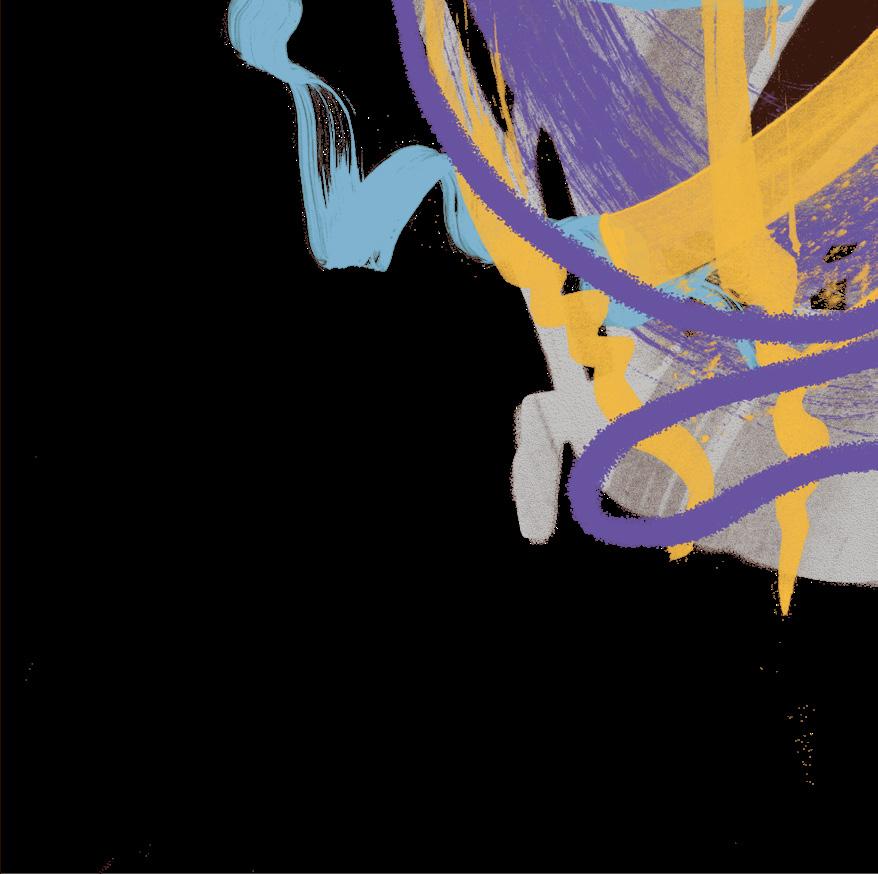
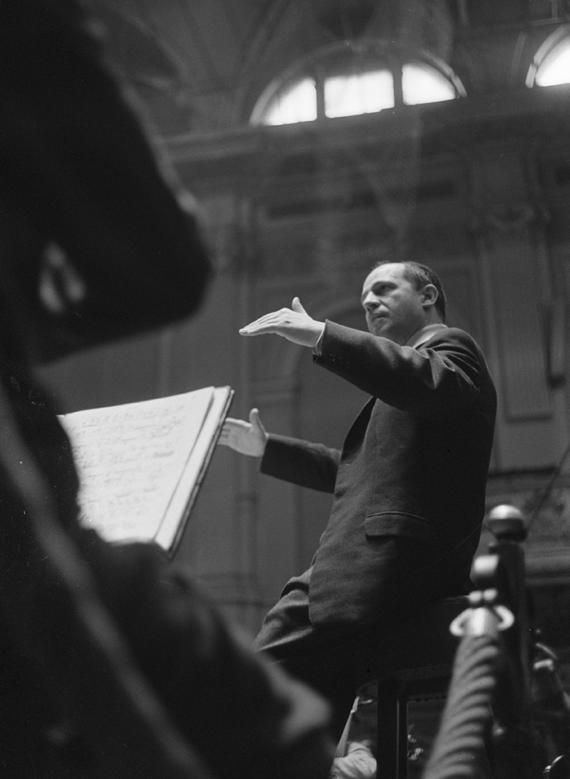
TUNE IN
Be sure to explore this playlist of incredible performances of
music
Timothy Young (Head of Piano) piano
Venue Rosina Auditorium, Abbotsford Convent Bookings anam.com.au or 03 9645 7911
TUNE IN
Get a taste of what ANAM has on offer in 2025 with this specially curated playlist




Maurice RAVEL Daphnis et Chloé
Leoš JANÁČEK Kátya Kabanová
Olivier MESSIAEN Couleurs de la Cité Céleste
Pierre BOULEZ Sur Incises
Julia WOLFE Dark Full Ride
Elizabeth YOUNAN Shoreditch Grind
Katy ABBOTT Fanfare for the Melancholy
A personal reflection by Evan Lawson
Boulez’s
Words by Anna Goldsworthy
Today, the Abbotsford Convent feels like a utopian village, as children somersault on the lawns, artists labour in their studios, the practice of ANAM musicians spills out of the windows, and (surely overkill!) the lowing of farm animals drifts in from next door. My own memories of the Convent tend towards the halcyon, comprising visits to the Collingwood Children’s Farm with my sons, for vicarious first sightings of goat and cow and guinea pig, and coffee-fuelled broadcasts from the 3MBS studios with my trio, Seraphim, alongside a wall inscribed with the signatures of friends, colleagues and – cringingly – our former selves. (Seraphim woz ere.) But these are brief, touristic impressions. The writer Nam Le was a tenant at the Convent for a decade, and remembers
My studio was C2.46, on the second floor of the Convent building, in its eastern (unofficial) “Writer’s Wing”. I often worked late – and was there alone after dark, visited only by the Wilson Security team. During that time I felt intensely connected to the Sisters, novices and postulants who had lived there since the mid 1800s. I sensed traces of their lives. And I felt intensely curious about these lives, the situations that had brought them there.
Any inhabited land is a palimpsest of human experience; but on this patch, as Nam suggests, stories are inscribed with a particular density. The longest and most significant of these is that of the Wurundjeri people of the Kulin Nation, for whom Yarra Bend was an important meeting place and a traditional burial ground. After white settlement, the Collins Street Baptist Church opened the Merri Creek Aboriginal School near Dights Falls, to cater for their children, but the Wurundjeri people were soon driven from the land, and the school closed six years later.
Another chapter began with the arrival in Victoria of four Irish women from France in 1863, who purchased land for the Convent and set about establishing an Industrial School for neglected children, alongside a Reformatory for ‘criminal’ children. These operations expanded to include an orphanage, followed by a Magdalen Asylum for the rehabilitation of ‘fallen women,’ whose transgressions ranged from insulting behaviour to ‘being out at night with boys’ to prostitution. At its peak, in 1901, the Convent of the Good Shepherd was the largest charitable institution in the Southern Hemisphere, housing more than a thousand inmates, and boasting vegetable gardens, a poultry farm, dairy and piggery, alongside a successful laundry business that supplied linen to some of Melbourne’s finest establishments, such as the Windsor Hotel.
For some women, the Convent represented safe harbour and companionship, but for many others – as testified by shocking submissions to Parliament – it was a site of trauma and abuse. Upon admittance to the Magdalen Asylum, women were stripped of their birth names and issued with the name of a saint alongside a uniform. It was a literal process of whitewashing: not only of laundry, but of self. (Small wonder such ghosts return to trouble a poet on the second floor...) Inmates were prohibited from leaving the grounds unsupervised, and worked punishing shifts in the laundries, in which accidents with the mangler were not uncommon. But business thrived. As journalist Alan Gill recalled, ‘bad girls do the best sheets.’
Over the 20th century, the Convent mutated further to incorporate a Youth Training Centre and a cooking and typing school, until it was sold and then taken over by Latrobe University. A developer’s plans for an apartment block and golf course prompted the formation of the Abbotsford Convent Coalition in 1997, which fought successfully for the multi-arts precinct we know today. Social history tours are now offered monthly, addressing the Convent’s ‘dense repository of heritage,’ while the Sisters of the Good Shepherd have faced their own reckoning. In 2018, they unveiled a memorial in the chapel’s garden, comprising a steel cylinder engraved with words nominated by former residents: shame, courage, fear, dreams, friendship, forgotten, anger.
Of course there is no single version of the Convent’s history, but a clamorous polyphony. In this project the young musicians of ANAM seek to give partial voice to this. It is a privilege for them to work with a writer of the stature of Nam Le, who over recent years has articulated a poetic geography of Melbourne, and now sets his sights on the Convent, with a poem ‘that evokes some of these ghosts – through the personal prism of my time there.’ Taking this poem as catalyst, our young musicians devise a musical response to the rich, charged history of the Convent, and some of its hauntings.
Pianist and curator Anna Goldsworthy will mentor and provoke ANAM musicians to create a concert experience that explores the complex history of the Abbotsford Convent. Collaborating with Dylan Thomas Prize-winning Author Nam Le, who has been commissioned by ANAM to write a poem that will inform this project.
Thursday 21 August 3pm & Friday 22 August 7pm
Venue Rosina Auditorium, Abbotsford Convent Bookings anam.com.au or 03 9645 7911
GHOSTS OF THE CONVENT



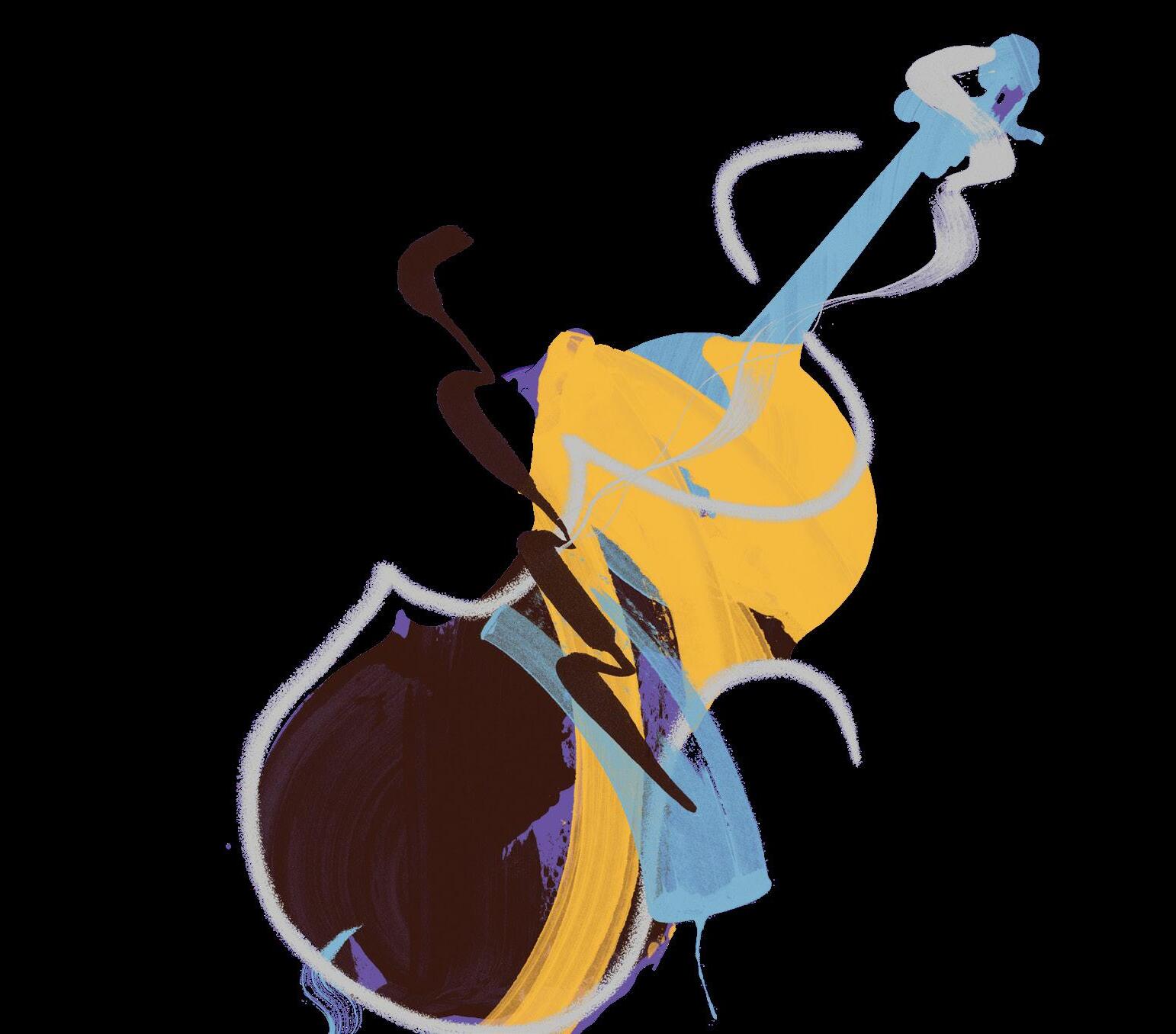

BEETHOVEN WEEPS, BEETHOVEN SMILES
Explore the life and music of the great Ludwig van Beethoven across 4 concerts in the Good Shepherd Chapel in Beethoven's World.
Words by Philip Lambert
When I was a boy we had a set of vinyl records of Beethoven’s symphonies, performed by the London Symphony Orchestra under Josef Krips. I was mesmerised and somewhat intimidated by the cover design, which was a black and white photo of a famous bust of the composer. The face was severe, with penetrating X-ray eyes and a downturned, grimly determined mouth. Ludwig looked less like a composer and more like a general ruminating his next campaign, as if composing a symphony were like going into battle, which, in a sense, it probably is. And this is the image we have of Beethoven –monolithic and battle-scarred. Search online and you will be hard pressed to find any contemporary portrait of Beethoven smiling. A smiling Beethoven does not figure in our collective consciousness. We always see him as the warrior, the hero, doggedly fighting for brotherhood and freedom.
It is not an entirely inaccurate image, but it is certainly not the whole story, because the musical warrior also loved a good joke, found solace in nature and fell hopelessly in love. His music smiles and laughs frequently, even if his marble bust does not. Beethoven’s symphonies loom so large over our musical landscape that we can easily forget the man who brought them into being was plain flesh and blood like the rest of us, and who felt the same joys and hurts. ANAM Artistic Director, Paavali Jumppanen will seek to give us a more rounded portrait of Beethoven in Beethoven’s World, a series of four concerts to be held in the Good Shepherd Chapel, Abbotsford.
Each concert will present a particular aspect of Beethoven’s life and character. The series begins at the end, so to speak, with music performed at Beethoven’s funeral, including his austere and haunting 3 Equali for four trombones. This is music which seems to come from an earlier century, and is in complete contrast to his Eroica Symphony, to be played here in the virtuosic arrangement for piano quartet by his brilliant pupil Ferdinand Ries. Later, in Headstrong Apprentice, we meet the ambitious teenage Ludwig, bursting with ideas and desperate to get out of provincial Bonn.
3
1
Beethoven’s life was like a courtroom drama as he fought tooth and nail for custody of his nephew Karl.
2
Be sure to join us for 4 stunning concerts exploring the life and music of Ludwig van Beethoven at the Good Shepherd Chapel in 2025.
HERO
Thursday 17 April 3pm
FAVOURITE MUSICIANS
Thursday 29 May 3pm
HEADSTRONG APPRENTICE
Thursday 11 September 3pm
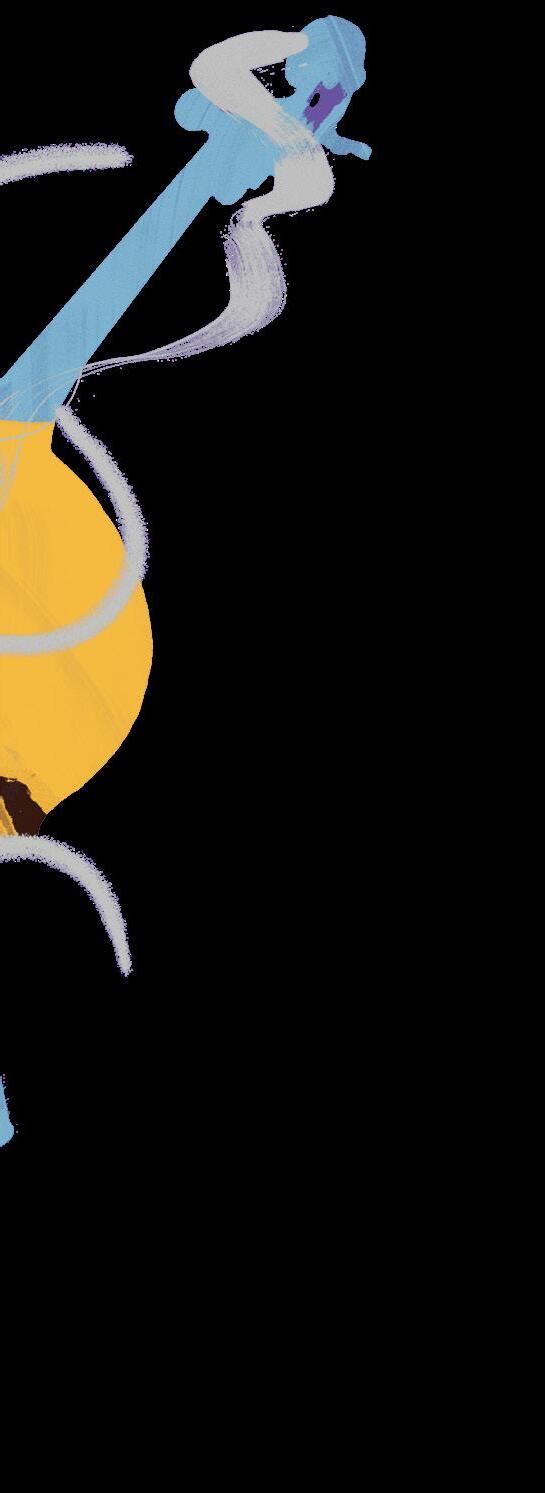
Beethoven’s remarkable Piano Quartet in C, composed at the age of 14 or 15, is full of humour, energy and originality, and is one of the first known examples of the genre. But the young genius was humble enough to know he needed to perfect his craft. He eventually found the ideal teacher in Josef Haydn, and the polish he acquired under the older master’s guidance can be heard in his effortlessly urbane Septet for winds and strings. It became the composer’s biggest hit, performed more frequently in his lifetime than any of his other works.
In Favourite Musicians we hear music written for players Beethoven particularly admired, including the charming Horn Sonata composed for Giovanni Punto, and the gorgeously lyrical Violin Sonata in G, op. 96, composed for Pierre Rode. Both these works prove that Beethoven was happy to match his style to the talents of musicians he held in high esteem.
In the final concert Paavali and the ANAM musicians take us into Beethoven’s heart and his longing for an intimate relationship. It was a desire that remained unfulfilled, despite many attempts, and his letter of July 1812, to the unnamed ‘Immortal Beloved’ is one of the most moving utterances in musical literature. The object of his affection was most likely Antonie Brentano, who was married and therefore out of reach. But in 1820, years after the ‘Immortal Beloved’ chapter, Beethoven dedicated his Piano Sonata in E major, op. 109, to Antonie’s daughter, Maximiliane. Its first movement is one of Beethoven’s tenderest, alternating between shy hesitancy and full-throated ardour; it sounds like a love letter without words. The series ends with his song cycle To the Distant Beloved, in which a disappointed lover finally accepts that he and his beloved can never be one. Was this Beethoven’s way of finally saying farewell to Antonie and his dream of a soulmate? We will never know for certain – Beethoven’s admirable discretion in affairs of the heart has frustrated biographers ever since. But the depth of his feeling cannot be ignored. It’s there, in the music. No marble bust, but a big, beating heart.
IMMORTAL BELOVED
Thursday 30 October 3pm
Venue Good Shepherd Chapel, Abbotsford Bookings anam.com.au or 03 9645 7911
Beethoven had a soft spot for catchy folk tunes, arranging over 150 songs from places like Scotland, Ireland, and Wales, mixing highbrow and lowbrow in a musical melting pot. 3
Beethoven was a bit of an eccentric—he brewed coffee with exactly 60 beans and poured cold water over his head while composing, convinced it sparked his genius.
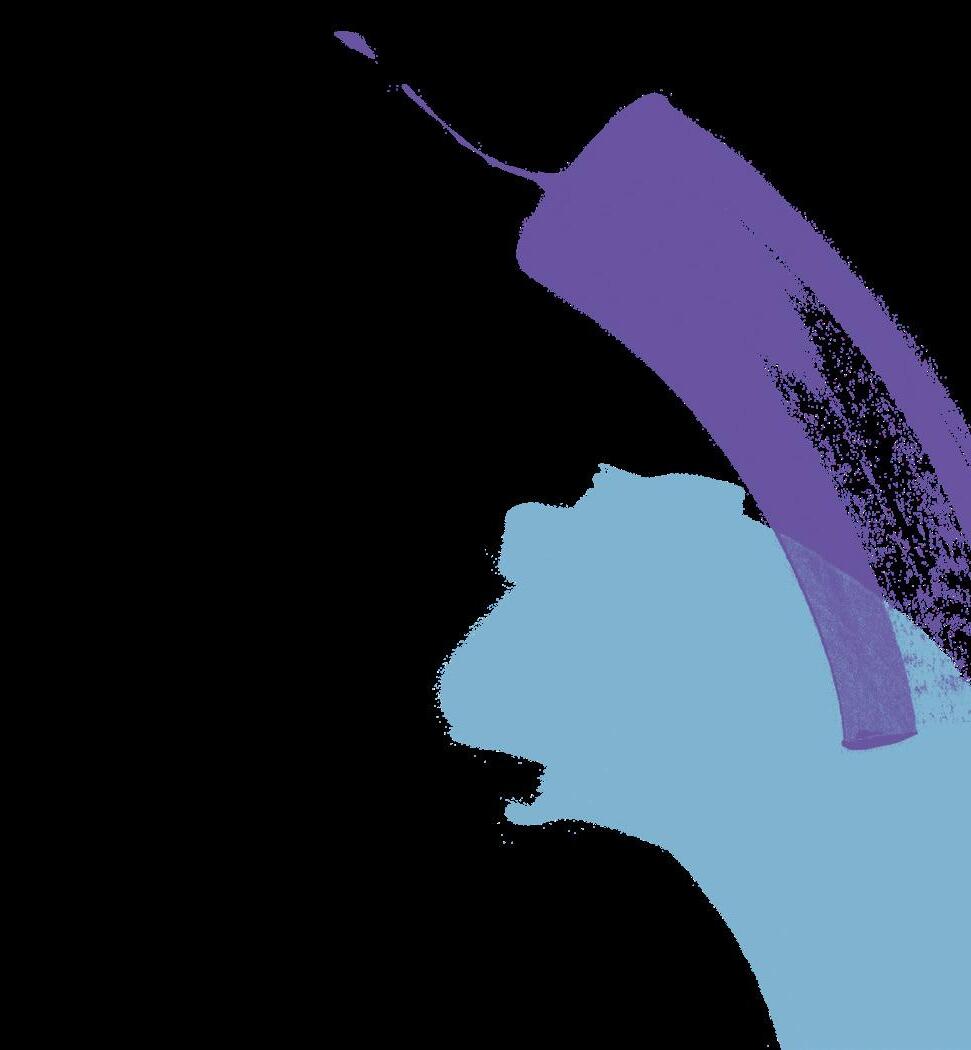

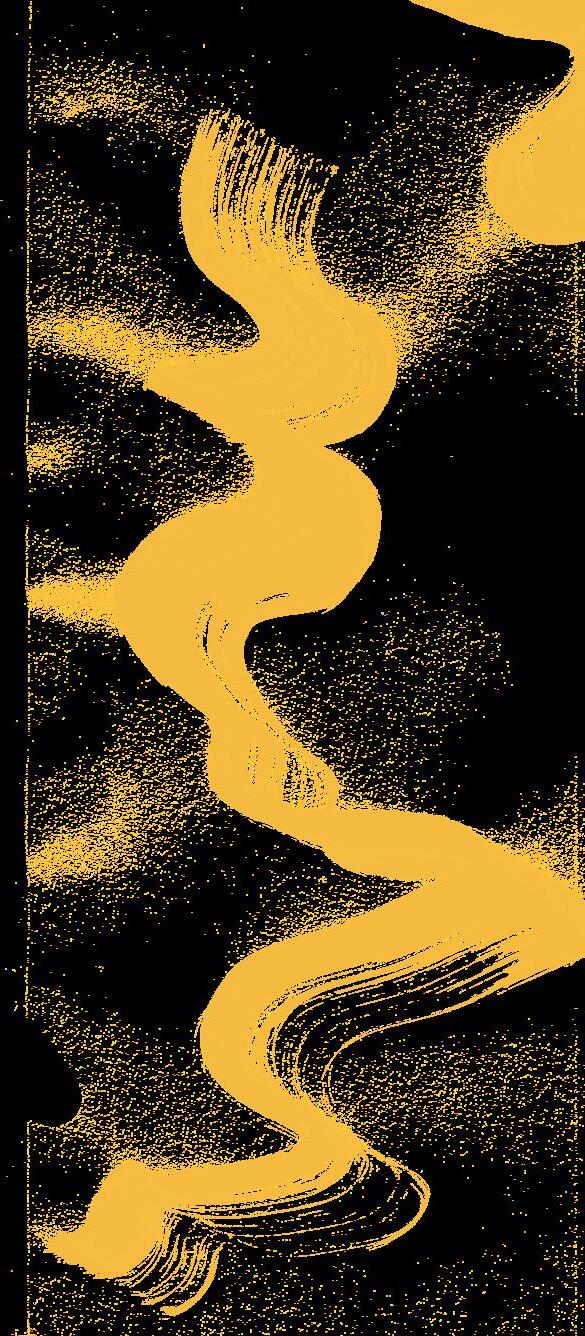
At the heart of ANAM’s mission is the belief that every musician is not just a performer but a storyteller. Various projects at ANAM offer a unique opportunity for our musicians to curate and present their work, artistic visions and the rigorous training they've undergone.
RECITALS
Each year ANAM musicians curate and perform their own recital. Developed in consultation with their teacher they prepare a robust hour of music that gives them a chance to showcase their biggest and most personal musical statement for the year. Musicians embark on this musical journey supported by their trusty Associate Faculty, the amazing team of pianists who help make the 60+ recitals a reality, and often with their peers who they perform with in chamber ensembles.
ANAM has commissioned 18 composers who will have their works premiered in the recital season as part of the ongoing ANAM Set
These newly composed works are generously supported by the Anthony and Sharon Lee Foundation Musicians and composers will work together across the year toward the premiere performance. Each work will also be recorded by our broadcast partner ABC Classic.
The ANAM Soundbite series adds an extra dimension to the performance program providing opportunities for musicians to curate a concert. They can explore solo and ensemble repertoire and improvisation. A diverse and rich program often arises, that brings together the varying threads of both old and new music, and sometimes outside of the realm of music into performance and multi-disciplinary collaboration.
MUSICIAN LED PROJECTS ORCHESTRAL PARTNERSHIPS
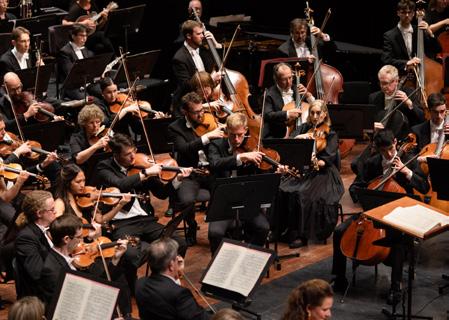




At the heart of the ANAM Performance Program are the orchestral partnerships, where our musicians play side by side with Australia and New Zealand’s major orchestras. Here, our musicians perform iconic works for large scale orchestra, whilst receiving mentorship by professional orchestral musicians. From the moment they arrive at the very first rehearsal of the week, they are treated with the same expectations to perform as any other musician of the orchestra.
For each orchestral partnership, ANAM musicians experience the inner workings of the symphony orchestra, and the unique workspace of the orchestra in their home rehearsal environment and concert hall. They observe first-hand how the musicians of the orchestra communicate, both on and off stage, workplace etiquette and professionalism, and how to blend and balance their sound in real time during rehearsals.
For some ANAM musicians, it can be their first time playing in a professional orchestra, and for others who already freelance professionally as casual musicians, it can be an opportunity to network with musicians outside of their home city, and understand the subtle differences of timbre, working environment and traditions of different orchestral organisations.
“I was able to gain a deeper understanding of Australia’s orchestral scene, and invaluable insight into a flagship orchestra working on a landmark, large-scale performance. What a gift,” says an ANAM musician (feedback following 2024 SSO/ ANAM performance of Schoenberg’s Gurrelieder).
Words by Oxana Sitchuk
CHAMBER MUSIC PARTNERSHIPS
In 2025 ANAM ensembles will perform chamber music with our partner presenters, including at the beloved Beleura House and Garden, Elgee Park, St. Silas, the Victorian Pride Centre, the Ian Potter Centre: NGV Australia, Museums Victoria and Scots’ Church, while adding a new special morning concert with the Camberwell Chamber Music Society.
These incredible concerts curated by ANAM Faculty and musicians give us not only a unique view into their musical development, but also bring our community together outside of the ANAM at the Convent series sharing music in unique spaces.
Dates, times and repertoire for these concerts will be made available throughout 2025, so sign up to the ANAM newsletter or check anam.com.au for further information.
WATCH NOW

Explore some of our musicians in ANAM on Film


Words by Laura Panther
In recent years, our musicians have performed in the mainstage programs of orchestras across Australia and New Zealand.
“Some of the highlights of my musical life came from sitting beside my teachers. There are many things, such as style, tone, timing and confidence, that can only be learned this way,” says a musician from the Auckland Philharmonia.
All instrumentalists, including pianists, can be selected to perform in these projects throughout their ANAM training. They are often a highlight of a musician’s time at ANAM – an invaluable opportunity to perform in an elite setting, whilst receiving immediate feedback from the professional musicians. It’s on-the-job training like no other!
In 2025 ANAM musicians share the stage with the Australian Chamber Orchestra (2 March), the Tasmanian Symphony Orchestra (29 March & 8 October), the Melbourne Symphony Orchestra (10 & 12 April) and the Auckland Philharmonia (20 November).
THE MOZART MIRACLE
TUNE IN
Philip Lambert explores the music of the great maestro at the heart of ANAMs much loved morning concert series at Melbourne Recital Centre, Mostly Mozart.
Words by Philip Lambert
In the 1960s a renowned European conductor was touring the United States for the first time. At a press conference, a reporter asked him the futile but irresistible question, “Maestro, who is the greatest composer?” The conductor presumably stifled a “not that one again” response before attempting an answer. “There are many great composers. Beethoven, of course, is at the summit, but then so too is Wagner. And of course one cannot overlook Bach.” There was a pause, before the reporter said, “But Maestro, you haven’t mentioned Mozart.” “Well, of course,” scoffed the conductor, “I thought you were talking about the rest.”
And there it is. As great as all the others are, there really is something special about Mozart. Science cannot explain it, neither neurology nor AI. In 1993 three scientists, Rauscher, Shaw and Ky, found that listening to Mozart could improve a person’s performance on certain IQ test questions for a period of up to 15 minutes. The media went wild with exaggerated claims for ‘The Mozart Effect’, and suddenly helicopter parents all over the world were drowning their toddlers in Mozart in the belief that they were raising a generation of geniuses. “Mozart today, Mensa tomorrow!”, was their motto. And although subsequent research has not proved that Mozart can make us smarter, music lovers know the truth – Mozart makes us happier. We intuit that Mozart gets as close to the heart of what we call music as any human can. Concert promoters also know this, which is why the annual Mostly Mozart series, presented by ANAM and the Melbourne Recital Centre, has been such a successful fixture for so long.
ANAM Artistic Director, Paavali Jumppanen, believes that our love for Mozart is partly due to his ability to speak to us on more than one emotional plane at once, how a single Mozartean phrase can convey “the tear behind the smile.” This notion cannot be empirically quantified, but I know exactly what Paavali means. Personally, I am frequently amazed at the way Mozart can take the most rudimentary musical building blocks and turn them into something arresting and melodic. Take the opening bars of his Sonata for piano duo, K381, in which he joins a simple scale (going up) with an arpeggio (going down),

Explore the amazing music on offer in Mostly Mozart in this specially curated Spotify playlist


two elements which are nothing special, but in Mozart’s hands become the most effervescent joy. He is like a couturier who can scoop up overlooked offcuts from the floor and fashion them into a beautiful garment. No one else does it better.
The 2025 Mostly Mozart series sees Wolfgang rub shoulders with some interesting company. In Serenade his magical ‘Posthorn’ Serenade is preceded by Debussy’s swoon-inducing Prelude to the Afternoon of a Faun in the chamber arrangement by Benno Sachs. The second concert places Mozart’s contribution to the string quartet in the context of Haydn, who came before and Beethoven, who came after. The relationship between Mozart and Haydn deserves special note. Despite their age difference of 24 years, this was a bromance for the ages. Mozart learned from the older composer what a string quartet could be, and the two met several times to play quartets with Carl Dittersdorf and Johann Vanhal. The six quartets Mozart composed in the period 1782-85 mark his maturity in the genre, and he dedicated the set to Haydn. Without in any way belittling Haydn’s glorious achievement, it is immediately obvious that Mozart’s quartets open up the genre even further with an expansiveness which leaves behind all gallant frippery. Beethoven picked up the thread, and his mighty Great Fugue is the result.
Other highlights in the 2025 Mostly Mozart season include Shostakovich’s searing Chamber Symphony, transcribed from his String Quartet No. 8, and composed during a visit to the bombravaged city of Dresden. What better antidote than Mozart’s Eine kleine Nachtmusik? The series comes to a brilliant, Gallic denouement in Mozart’s Piano Concerto No. 25, in which a march-like tune in the first movement seems to hint at La Marseillaise Scholars are still debating whether Mozart’s tune influenced Claude de Lisle’s patriotic song, or whether both were quoting a pre-existing song. ANAM’s Head of Piano, Timothy Young will supply his own take on the tune with a 4-hand arrangement for fortepiano. Bring your tricolour and beret.
“Debussy’s Prélude à l’après-midi d’un faun is ‘Impressionistic’ magic and inspires colours, emotions and feelings of nature. It is such a beautiful work and gives the flute soloist a chance to experiment with nuances, rubato, the use of breath, and phrasing to paint a truly vivid and expressive picture.
Mozart’s joyous Serenade No. 9 (Posthorn) in D major, written in Salzburg in 1779 is a true classic and inspires vibrancy, clarity of articulation, dance characters, beauty and dialogue of melody and sparkling virtuosity from all musicians.”
– Alison Mitchell, Flute Faculty
The 2025 Mostly Mozart season features the Australian String Quartet, and ANAM faculty members Damien Eckersley, Alison Mitchell, Adam Chalabi and Artistic Director Paavali Jumppanen.
Subscriptions available from Tuesday 19 November. Single concert tickets will be made available in early 2025.
Bookings melbournerecital.com.au or 03 9699 3333
Presented by the Australian National Academy of Music (ANAM) and Melbourne Recital Centre
ANAM is dedicated to more than just technical prowess in our musicians; we shape ambassadors of the art form. Central to this mission is our Community Engagement Program, an initiative that extends the reach of our musicians far beyond the edges of the concert stage. It builds bridges between the musicians and the diverse communities they serve.
Under the expert guidance of music educator Karen Kyriakou, ANAM musicians step into schools, aged care homes and community spaces, bringing the transformative power of music to those who might otherwise have little access to it. The Community Engagement Program at ANAM aims to tailor each experience to meet the needs of its audience, ensuring the music is felt and understood.
One of the most interesting aspects of this program is how our musicians learn to adapt. They step into an educator’s shoes, learning how to present complex pieces. One week, they’re in a primary school, performing for children who are all wide-eyed and curious, and the next, they’re tweaking that same performance for a group of high school seniors. It’s about more than just playing well; it’s about making the music resonate, no matter who is listening.
This process is rigorous but rewarding. Musicians are grouped and mentored by Karen, who brings to the table her rich expertise in music education. Together, they craft engaging and accessible performances and workshops through evolving peer reviews and direct feedback.
90% of ANAM musicians take part in the program each year, reflecting its importance in shaping well-rounded artists.
Our community concerts are equally impactful. The musicians engage with the audience, discussing the pieces in a way that invites listeners to explore and enjoy the music more deeply.
The program also invites musicians to tackle more challenging repertoire in a unique setting. For example, Stravinsky’s Octet or Bartók’s Sonata for Two Pianos and Percussion, challenges musicians to present them in a way that captivates and delights. This is no small feat, but is a crucial part of musicians development — teaching them to communicate the intricacies of music in an accessible and engaging manner. It’s an experiment in communication with a focus on connection.
COMMUNITY ENGAGEMENT FROM OUR PEOPLE
“My first year at ANAM, under the guidance of Howard Penny, has been the most transformative period of my musical training. The past eight months have been filled with incredible opportunities, from partnerships with various symphony orchestras to collaborations with world-class artists. The concentrated chamber music training and individualised support at ANAM are unparalleled, pushing each student to reach their highest potential. Looking forward to 2025, I am eager to further immerse myself in these diverse opportunities and deepen the relationships with my peers and teachers. ANAM has taught me the value of experience which covers a vast variety of skills such as learning from mistakes, recognising strengths and weaknesses, and preparing for future challenges. I am excited to build upon this year’s experiences to continue growing as a musician next year.”
– Heesoo Kim (QLD) cello
“ANAM is immersive, exhausting and enriching… Carla Blackwood [ANAM Faculty, horn] is exactly the sort of mentor I need at this stage of my horn-playing development.“
– Madelaine Aarons (NSW) horn
“New beginnings can be both terrifying and exhilarating. When I started at ANAM this year, I was overwhelmed by the positivity and friendliness of the audience and generous supporters I spoke to on the phone and met at concerts. All welcomed me to ANAM with as much warmth as my colleagues. I realised very quickly that ANAM means a great deal to many people, united by a love of music and driven by enthusiasm for the advancement of young Australian musicians.
The high quality of musicianship, education, and coordination at ANAM has given me a rejuvenated zeal for arts administration and reinforced the value of community in pursuit of the arts.”
– Jasmin Bardel, Development Assistant
“We have been involved for a number of years in the ANAM Syndicate program, starting with one musician, with whom we still have contact. It has been a wonderful to be involved – we have gained more than we have given, met likeminded people and developed friendships. We enjoy watching young musicians blossom at ANAM and go out in the world and do their thing.”
– Joan and Barry Miskin, ANAM Syndicate donors
Words by Oxana Sitchuk
The ANAM Community Engagement Program is all about equipping our musicians with the skills they need to make a real difference in the world. They learn public speaking, improvisation, and even how to write scripts for their performances. These skills are not just for show; they’re essential tools that help the musicians adapt and thrive in diverse settings.
As Qian Ying Ong, ANAM Senior Coordinator of Studio and Community Engagement, aptly puts it, “It’s not ANAM’s place necessarily to change the world, but it’s definitely our responsibility to train the musicians who might do that.” Through our Community Engagement Program, we’re doing just that—one concert, one connection, one community at a time.
“Working with the outstanding young musicians of ANAM over the last 15 years has undoubtedly been the most rewarding part of my life as a musician.
The organisation wide buy-in to the values of excellence, collaboration, community, inclusivity and creativity, promotes an environment in which individuals from diverse backgrounds, and with equally diverse dreams and aspirations, can come together to truly create something greater than the sum of their parts.
Working in this environment, together with the passionate and exceptional faculty members, as well as the inspiring young musicians, one simply never stops learning, and is consistently challenged and encouraged to find more, to think more, to feel more.
The leadership skills, critical and creative thinking, and consistently high level of application and artistry that the young musicians of ANAM bring to the concert platform as part of this community, have fostered an aura of excellence and excitement around ANAM public performances.
The 2025 season looks again to be the best of what the ANAM community brings to the cultural landscape of our country; a deep respect of diverse traditions, forging new paths, and promoting the artistic leaders of today and beyond.”
– Damien Eckersley, ANAM Faculty, Double Bass


THE RARE OPERATIC GEM KÁTYA KABANOVÁ COMES TO TOWN
Words by Evan Lawson
Once again, the ANAM Orchestra joins forces with the incredible state opera company Victorian Opera to bring to life one of the most evocative and rarely performed operas of the 20th century: Leos Janáček’s Kátya Kabanová. This ambitious project promises to deliver a stirring interpretation of a Central-European masterpiece that has long been admired but remains a hidden gem for many in Australia.
Kátya Kabanová, Janáček’s 1921 opera, is renowned for its intricate orchestration and profound emotional depth. Set in early 20th-century Russia, the opera explores themes of personal despair and societal constraints through the tragic story of Kátya, a young woman trapped in a stifling marriage and oppressive environment. Janáček’s composition is a tour de force of expressive orchestral writing and evocative vocal lines, making it a perfect showcase for the talents of both ANAM’s musicians and Victorian Opera’s cast.
Victorian Opera’s artistic director, Stuart Maunder, shares his thoughts “the joy of Kátya Kabanová lies in its extraordinary orchestral score. It’s a piece that allows us to stretch the boundaries of our usual repertoire and offers a unique challenge for the orchestra. It’s certainly in my top five operas of all time.”
Maunder's excitement is palpable when he discusses Janáček’s work, which he describes as both remarkable and deeply human. “Janáček’s writing is grounded in folk tunes and the Czech sensibility, but it doesn’t have the grandeur or pomp of some other composers. It’s honest and deeply affecting,” Maunder noted. It is deeply moving music, with a distinctive voice we rarely get to hear in Australia.
The ensemble’s involvement promises to bring a fresh and dynamic energy to Janáček’s intricate score.
Leading this exciting venture will be conductor Finnigan Downie Dear, whose burgeoning career has recently seen him make waves during engagements with the calibre of institutions such as the Staatsoper Hamburg and the Rotterdam Philharmonic. Maunder shared his high regard for Downie Dear, highlighting his deep understanding of Janáček’s repertoire. “Finnegan is becoming a specialist in the Janáček repertoire,” Maunder said. “He’s meticulous, theatrical, and has a profound grasp of the opera’s global context. His involvement is a huge asset to this project.”
Downie Dear’s growing reputation for his interpretative skill and dedication to his craft makes him an ideal choice to helm this production. His previous work with challenging pieces and his nuanced approach to orchestral music promise to bring out the full depth and richness of Kátya Kabanová
In addition to ANAM and Downie Dear, Victorian Opera will provide an exceptional cast of singers, ensuring the vocal performance of true brilliance we’ve come to expect from Victorian Opera. Maunder’s belief in the transformative power of this opera is evident as he reflects on past experiences with Janáček’s works.
“When you hear Kátya Kabanová performed with the full orchestra, it’s a transformative experience. Janáček’s orchestration creates an intense, immersive soundscape that’s truly captivating.”
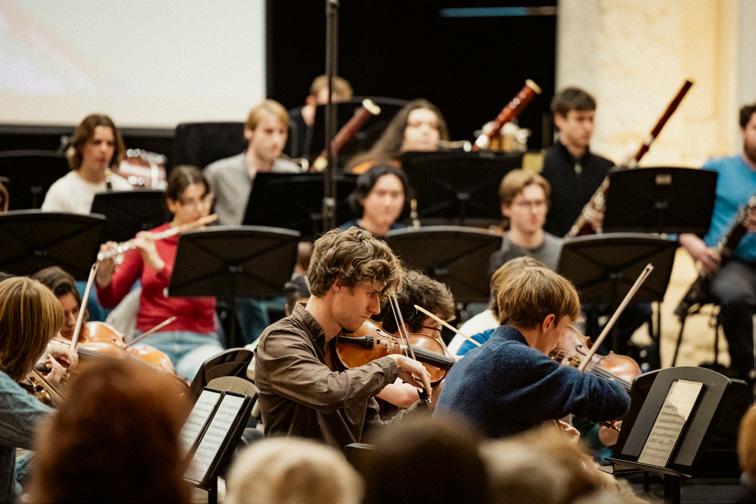
This collaboration between Victorian Opera and ANAM is not just a chance to experience a rare operatic masterpiece; it’s an opportunity for both institutions to push the boundaries of their artistic capabilities and to present a performance that is both daring and deeply moving.
This will be one of the operatic highlights of 2025.
KÁTYA KABANOVÁ
Tuesday 14 October 2025 7.30pm
Thursday 16 October 2025 7.30pm
Fully-staged opera
Leoš Janáček Kátya Kabanová
Finnegan Downie Dear conductor
Heather Fairburn director
Savanna Wegman set and costume designer
Niklas Pajanti lighting designer
Robert Brown video designer
Ben Sheen assistant director
Alexander Lewis Boris Grigorjevič
Antoinette Halloran Marfa Ignatěvna Kabanová (Kabanicha)
Michael Petruccelli Tichon Ivanyč Kabanov
Desiree Frahn Kátya (Katerina)
Douglas Kelly Váňa Kudrjaš
Emily Edmonds Varvara
Adrian Tamburini Dikoj
Victorian Opera Chorus
ANAM Orchestra
Venue Palais Theatre, St Kilda
Bookings anam.com.au or 03 9645 7911
Presented by Victorian Opera with Performance Partner Australian National Academy of Music (ANAM)
SYNOPSIS
Kátya Kabanová, set in the 1860s in the Russian town of Kalinov by the Volga River, tells the tragic story of Kátya, a young woman trapped in an oppressive marriage.
In Act 1, Váňa Kudrjás admires the Volga River, while Boris Grigorjevič endures the harsh treatment of his uncle Dikoj. Boris confides to Váňa that he is secretly in love with Kátya, the wife of Tichon. Kabanicha, the domineering matriarch of the Kabanov family, berates Kátya and Tichon, who must leave on business. Kátya, torn by fear and desire, pleads with Tichon to make her swear an oath to remain faithful during his absence.
Act 2 sees Kátya struggling with her emotions while Kabanicha continues to belittle her. Varvara, the family’s foster daughter, gives Kátya a key to the garden, suggesting she meet Boris. Hesitant at first, Kátya eventually succumbs to her feelings and meets Boris in the garden, where they confess their love for each other.
In Act 3, as a storm approaches, Kátya's guilt overwhelms her. After Tichon's return, she publicly confesses her infidelity and flees into the storm. Later, as the storm subsides, Kátya, tormented by shame and despair, meets Boris one last time before throwing herself into the Volga. Her body is retrieved, and Tichon mourns her, while Kabanicha coldly thanks those around her, indifferent to the tragedy.

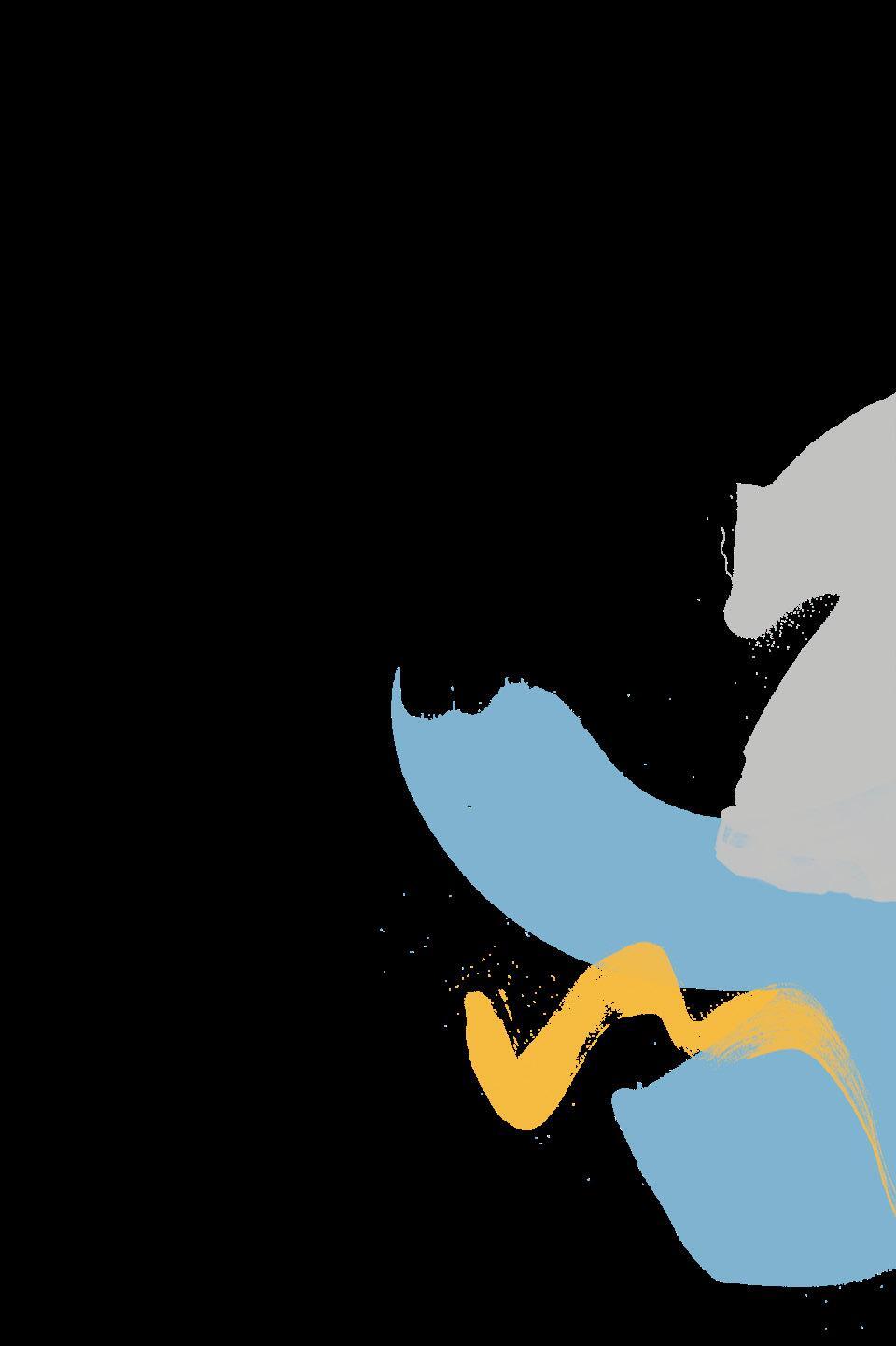
ANAM
ANAMATES MEMBERSHIP
Become an ANAMate from just $75* and gain access to mates rates on a range of ANAM performances.
Being an ANAMate offers great value and a range of benefits, including:
Receive your first ticket to an ANAM ticketed concert for free, subject to availability. Valued at up to $60, your free ticket will be automatically redeemed in your first transaction for a 2025 performance. This offer is not available for ANAM Orchestra with Asher Fisch or Kátya Kabanová
Access to discounted ticket prices, including 10% off tickets to ANAM Orchestra, ANAM at the Convent, ANAM Chamber Music Festival and Beethoven’s World Free entry to all ANAM Recitals, Soundbites and ANAM Masterclasses
Pre-sale access to special events throughout the year
No transaction or exchange fees on ANAMates tickets
Access to special offers and discounts to ANAM partner organisations
*Complimentary ANAMates membership is available for residents living in the City of Port Phillip.
HOW TO BOOK SUPPORT THE FUTURE OF MUSIC
TICKETING IN 2025 –A LITTLE EXTRA OR A LITTLE LESS
Tickets to ANAM at the Convent, Chamber Music Festival and Beethoven’s World concerts booked in advance are offered on a “pay what you wish“ basis. This means that in addition to a Standard price, we offer the option of paying A Little Extra for those who would like to contribute a little more, as well as the option of paying A Little Less. All ticket revenue contributes to ANAM’s ability to provide exceptional training for our young musicians and to present public performances throughout the year.
We hope that these prices continue to make ANAM concerts accessible to all.
If you are booking over the phone, simply tell us your preferred ticket price.
ANAMates receive a further 10% discount on the listed prices.

When booking your 2025 tickets, please consider adding a tax-deductible donation to support ANAM.
As a not-for-profit organisation, ANAM relies on the generosity of donors to provide 30% of our budget which underpins the training of ANAM musicians. You may also like to make a regular monthly gift to ANAM or leave a bequest in your will.
For more information please email Kate Mazoudier on k.mazoudier@anam.com.au or call 03 9645 7911.
WHAT IS ANAM?
The Australian National Academy of Music (ANAM) is an international, dynamic and outward-facing cultural institution, training and performance company, with a demonstrated commitment to engaging with its communities. Accepting musicians from across Australia and New Zealand, it is internationally renowned as the only purely performance classical music training academy in Australia, and one of the few in the world.
ANAM alumni are found in many of the world’s leading orchestras and ensembles, and ANAM’s intensive schedule brings together a global network of artists and performers, alongside an esteemed faculty, who provide invaluable mentorship and guidance for emerging young musicians through public performances, in-residence masterclasses and other programs.
In addition, ANAM has industry partnerships with organisations including the Australian Chamber Orchestra, the Sydney, Tasmanian, Melbourne and West Australian Symphony Orchestras, the Auckland Philharmonia, Musica Viva Australia, a range of national music and arts festivals, and internationally with the Berlin Philharmonic Orchestra, the Bavarian State Opera Orchestra (Munich), Mahler Chamber Orchestra (Berlin) and London’s Royal College of Music.
ANAM is a member of the Australian Government-funded Arts8 group of performing arts training organisations who are committed to providing the high level and intense studio-based training necessary to ensuring that the performing arts sector has a pipeline of creative talent that will enable it to continue telling stories for generations.
CREDITS
Editor
Evan Lawson
Contributors
Paavali Jumppanen
Anna Goldsworthy
Evan Lawson
Laura Panther
Alex Owens
Oxana Sitchuk
Philip Lambert
Design Studio Brave studiobrave.com.au
As part of our commitment to sustainability, we are moving our ticket bookings to online or over the phone. To secure your 2025 tickets: Visit anam.com.au
Call us on 03 9645 7911
Speak to our Box Office staff at ANAM concerts
ACCESS
ANAM accepts bookings from individuals who hold a government-issued Companion Card. Companion Card holders are eligible to book one complimentary ticket for their companion, to assist the Companion Card holder with their access requirements. A valid Companion Card must be presented upon collection of tickets.
BOOK NOW
Find out more about ANAM 2025 concerts and book tickets at anam.com.au
All donations to ANAM over $2 are tax deductible Artistic Residencies at ANAM are generously supported by a number of donors in 2025: Asher Fisch’s residency supported by David and Gai Taylor, Sara Macliver’s residency supported by Meredith Baldwin and Steven Schick’s residency supported by Peter Jopling AM KC and Richard Parker.
JOIN THE CONVERSATION /life.at.ANAM @lifeatanam
Australian National Academy of Music youtube.com/lifeatanam ANAM Radio
eNews anam.com.au Blog anam.com.au/life-at-anam
AUSTRALIAN NATIONAL ACADEMY OF MUSIC (ANAM)
Abbotsford Convent
1 St Heliers St ABBOTSFORD VIC 3067 03 9645 7911
info@anam.com.au anam.com.au
